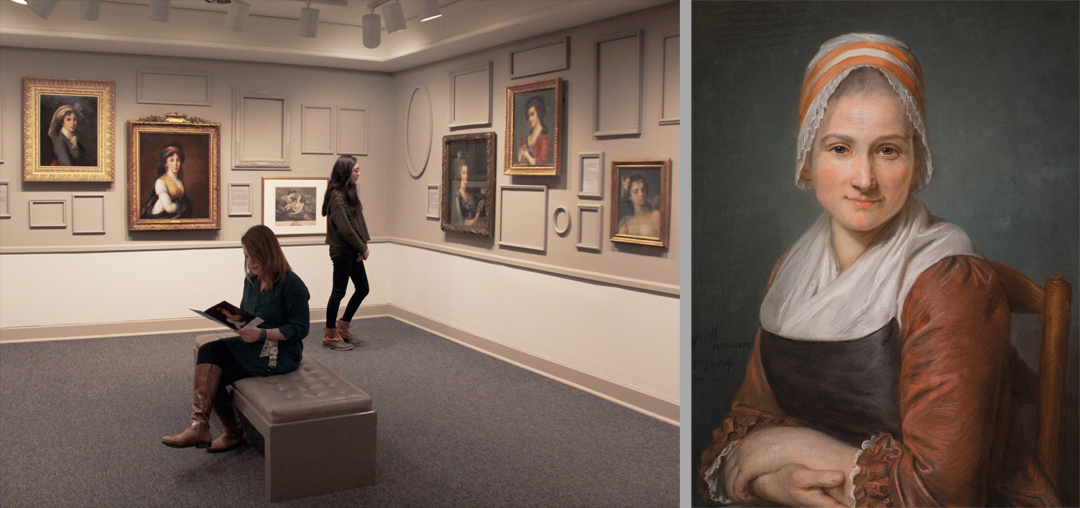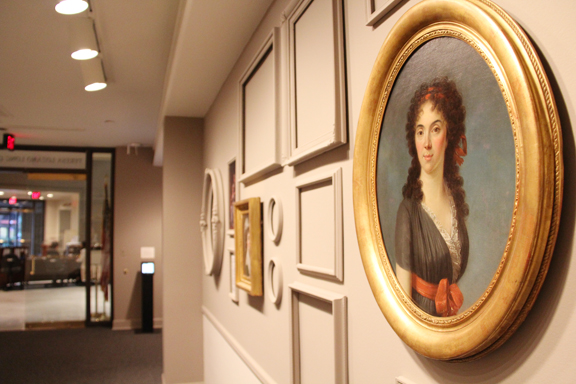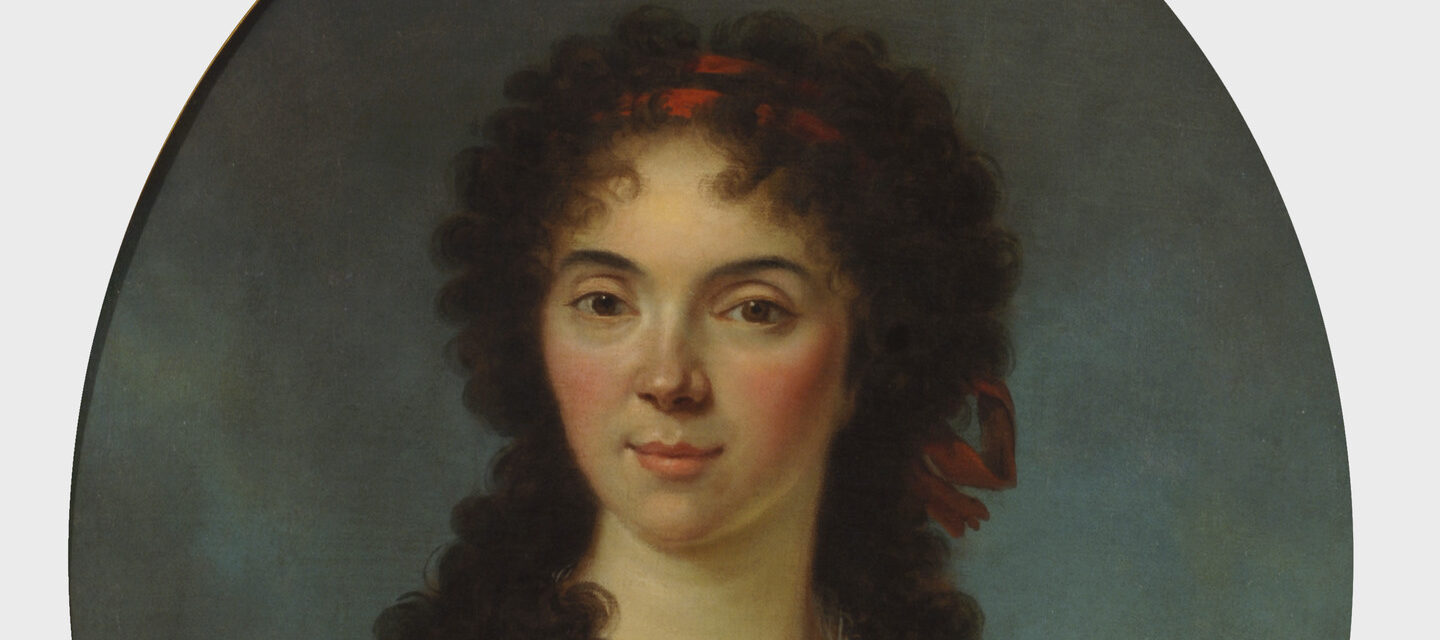Salon Style: French Portraits from the Collection examines portraiture by women artists of 18th-century France, who struggled past barriers of training, public opinion, and political turmoil to attain professional success.

Exhibiting at the Salon of the Royal Academy of Painting and Sculpture in Paris was an important milestone for the success of any artist. From 1735 onward, the biennial exhibition was held in the Louvre’s Salon Carré. In order to exhibit, artists had to be members of the Academy. Artists were voted in by other members after being presented formally by a current academician. For women, this was doubly challenging: their work had to be found as worthy as that of their male peers despite not having equal access to artistic training, and the total number of female members allowed at any one time was limited to four.
Élisabeth Louise Vigée-LeBrun and Adélaïde Labille-Guiard made history on May 31, 1783, when they were both admitted into the Academy. However, while Labille-Guiard was accepted through the standard application process, the Academy was compelled to admit Vigée-LeBrun under an edict from King Louis XVI. Vigée-LeBrun was a favorite portraitist of the king’s wife, Queen Marie Antoinette. With the admission of Labille-Guiard and Vigée-LeBrun in 1783, the Academy reached its quota for women artists, together with the portrait and still-life painter Anne Vallayer-Coster and miniaturist Marie-Thérèse Reboul Vien.

Throughout its history, the Academy accepted over 450 members, only 15 of whom were women. Even when they were admitted, women did not enjoy the same benefits. Unlike their male peers, women were not allowed to vote on new members. They also could not teach or take Academy art classes.
Works by women who exhibited in the Salon were compared and judged against one another, as were their characters. By asserting themselves in the public sphere, women artists risked upsetting societal expectations, which held that virtuous women belonged solely to the private, domestic sphere. Despite this risk, these artists persisted in exhibiting in the Salon throughout the rest of the 18th century. This focus exhibition examines these women and their art as well as their artistic legacies, particularly that of Élisabeth Louise Vigée-LeBrun.
Salon Style: French Portraits from the Collection is on view through May 22, 2016. Visit the museum and see works by Adélaïde Labille-Guiard, Marie-Victoire Lemoine, Élisabeth Louise Vigée-LeBrun, Marie-Geneviève Navarre, and Rosalba Carriera.

